A (Black) Gat in the Hand: Dave Hardy on REH’s El Borak
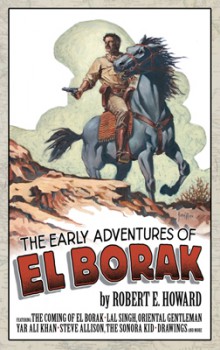 As the chill of December frosts our doorsteps, it’s time to wrap up our ‘Summer’ Pulp series for another year. Last summer I wrote about Robert E. Howard’s Kirby O’Donnell. His tales can be found in Del Rey’s FANTASTIC El Borak, and Other Desert Adventures. That tome rivals the Conan books as my favorite in the entire series.
As the chill of December frosts our doorsteps, it’s time to wrap up our ‘Summer’ Pulp series for another year. Last summer I wrote about Robert E. Howard’s Kirby O’Donnell. His tales can be found in Del Rey’s FANTASTIC El Borak, and Other Desert Adventures. That tome rivals the Conan books as my favorite in the entire series.
While I like O’Donnell, the reason I chose him, is because nothing I write about El Borak could hold a candle to Dave Hardy’s essays on REH’s transplanted cowboy. David’s afterward, Gunfighters of the Wild East, is THE definitive essay on the subject. He also wrote the introduction to The REH Foundation’s The Early Adventures of El Borak.
So naturally, I asked him to talk about El Borak (which means, ‘The Swift’) for our Discovering Robert E. Howard series here at Black Gate. And he delivered one of my favorite essays. I wanted to get it back out there, and into A (Black) Gat in the Hand. I re-read at least one El Borak story every year; usually more than that. Plus O’Donnell, and Clancy. Just thrilling adventures. There’s no one better suited to expound on Francis Xavier Gordon, so enough blathering from me. Let’s check out ‘The Swift.’
Francis Xavier Gordon, known from Stamboul to the China Sea as “El Borak”-the Swift-is perhaps the first of Robert E. Howard’s characters, and the last. El Borak is one of those distinctive characters that could only come from the fertile imagination of REH. He is a Texas gunslinger from El Paso, an adventurer, who has cast his lot in the deserts and mountains of Arabia and Afghanistan. There’s a little bit of John Wesley Hardin in his makeup, a bit of Lawrence of Arabia, and just a touch of Genghis Khan.
Howard described the origin of Gordon and other characters to Alvin Earl Perry: “The first character I ever created was Francis Xavier Gordon, El Borak, the hero of “The Daughter of Erlik Khan” (Top Notch), etc. I don’t remember his genesis. He came to life in my mind when I was about ten years old.”
That would put El Borak’s origins about 1915, the year Rafael Sabatini’s pirate novel The Sea Hawk appeared. The titular Sea Hawk is an Englishman who joins the corsairs of the Barbary Coast. There is also a supporting character named El Borak. Howard also noted that Bran Mak Morn, hero of “Worms of the Earth,” bore a resemblance to El Borak.
Howard made a number of abortive efforts at writing Gordon stories in the early 1920s. Howard was experimenting with Gordon, teaming him up with an early version of Steve Allison (the Sonora Kid) in stories that borrow motifs from H. Rider Haggard, Talbot Mundy, James Fenimore Cooper, Achmed Abdullah, and Howard’s love of exotic tribes and their weaponry.
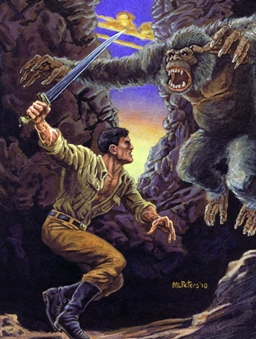 One fragment tells of El Borak’s rescue of an Englishwoman from Pathan raiders, a classic theme of many Westerns (Last of the Mohicans, The Searchers) transposed to the Northwest Frontier of India. Perhaps the oddest of the lot is a science fiction tale where Gordon, in full Genghis Khan mode, bent on conquering a Middle Eastern kingdom, fights a battle-robot in hand-to-hand combat.
One fragment tells of El Borak’s rescue of an Englishwoman from Pathan raiders, a classic theme of many Westerns (Last of the Mohicans, The Searchers) transposed to the Northwest Frontier of India. Perhaps the oddest of the lot is a science fiction tale where Gordon, in full Genghis Khan mode, bent on conquering a Middle Eastern kingdom, fights a battle-robot in hand-to-hand combat.
In the mid-1930s, Howard wrote several stories about a similar character, Kirby O’Donnell, which were swashbuckling, but O’Donnell lacks the bold decisiveness of El Borak. It didn’t help that O’Donnell appeared in a two-part story, and the two parts were sold to different magazines. A third O’Donnell story remained unsold and was re-written as a Conan tale by L. Sprague de Camp (“The Trail of the Bloodstained God”).
Howard also wrote “The Fire of Asshurbanipal,” which featured a Texan protagonist, Steve Clarney, and his Afghan comrade on a treasure hunt in Arabia. The story exists in two forms, one without any fantastic elements, and one with a Lovecraftian monster that was published in the December 1936 issue of Weird Tales.
It was not until 1934 that El Borak returned. Howard had achieved no small success with Kull, Conan, Bran Mak Morn, Solomon Kane, Sailor Steve Costigan, and Breckinridge Elkins, making El Borak the last of his major characters to hit print. “The Daughter of Erlik Khan” appeared in the December 1934 issue of Top Notch. Howard had all the pieces on the board. Gordon is by turns a swaggering swordsman, and a man willing to risk his life to save a friend’s life, or avenge his death.
There are treacherous English adventurers (think Peachy Carnehan and Daniel Dravot gone rotten), a horde of Turkoman bandits, and a princess imprisoned in an ancient castle complete with an evil monk, hidden passages, and a vast treasure. Howard had his Western gunfighter in an Eastern adventure, with nods toward Haggard’s Lost Race stories, Kipling’s Empire tales, and the Gothic.
The core of it all is Gordon. He is a bit of chameleon, a man who puts on theatrical airs when it suits his purposes, who might appear to be an outlaw looking to loot the nearest treasure hoard, but is truly motivated by loyalty to friends. At the same time he is a hero from a Western.
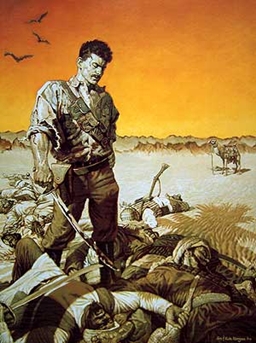 The tales of the British Empire then in vogue tended to have similar settings, the Hindu Kush, the deserts of Arabia or Africa. But their heroes were often empire-builders, soldiers of the queen (e.g. the protagonists in Lives of a Bengal Lancer and Charge of the Light Brigade). By contrast El Borak serves no man. Like a drifting cowboy, he follows his own code and his own path.
The tales of the British Empire then in vogue tended to have similar settings, the Hindu Kush, the deserts of Arabia or Africa. But their heroes were often empire-builders, soldiers of the queen (e.g. the protagonists in Lives of a Bengal Lancer and Charge of the Light Brigade). By contrast El Borak serves no man. Like a drifting cowboy, he follows his own code and his own path.
“Hawk of the Hills” plays up Gordon’s independent streak. The story could be read as a range-war story transposed from cattle country to the Afghan hills. But in Central Asia, there is no sheriff and Gordon can indulge his Texan proclivity for feuding to the fullest. The part of the sophisticated “Easterner” seeking to put an end to the feud is taken by Willoughby, a British diplomat. Instead of a climactic quick-draw gunfight, there is a sword duel, with dramatic results.
The run of El Borak stories in Top Notch continued with “Blood of the Gods” in the July 1935 issue. Both “Hawk of the Hills” and “Blood of the Gods” were cover features, but the run ended there. The next El Borak story, “The Country of the Knife,” did not appear until August of 1936 in the pages of Complete Stories. The story puts El Borak into a city of outlaws hidden in a remote part of Afghanistan. Gordon is there partly to rescue a young man investigating a friend’s murder, and partly to stop a ruthless renegade’s plot to start a rebellion and sweep through India as a conqueror.
“Country of the Knife” brings Gordon back around to the theme of the self-willed adventurer who rises from nothing to become a warlord. Howard had toyed with the idea in the early Gordon stories. Of course both Conan and Kull are such men. But where Conan and Kull’s worlds are chaotic ones, in need of a strong hand to seize power and protect the weak, Gordon’s world is more or less stable. Instead of greed for power, El Borak risks his life to keep peace, or at least as much peace as a man like Gordon can stand.
There were two other El Borak stories that were never published in Howard’s lifetime. “The Lost Valley of Iskander” is a genuine Lost Race story. While being pursued by villain intent on conquering India, El Borak stumbles into a city of Greeks dwelling in the mountains of Afghanistan.
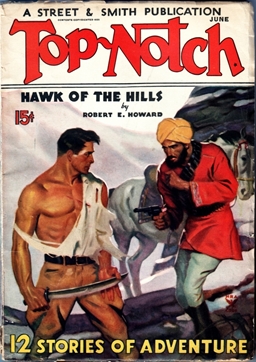 They are descendants of Alexander the Great’s soldiers, living as the Ancient Greeks did. By tradition their leader is the strongest man in the city, setting up a wrestling match between El Borak and Ptolomy the Strong. It’s a mix of the Oriental adventure and a boxing story, a nice example of the way Howard blended genres to suit his interests.
They are descendants of Alexander the Great’s soldiers, living as the Ancient Greeks did. By tradition their leader is the strongest man in the city, setting up a wrestling match between El Borak and Ptolomy the Strong. It’s a mix of the Oriental adventure and a boxing story, a nice example of the way Howard blended genres to suit his interests.
The other El Borak story that went unsold was the novella “Three-Bladed Doom,” which exists in a long and short version. The long version was re-written as a Conan story under the title “The Flame Knife” by L. Sprague de Camp. Like “Country of the Knife,” “Three-Bladed Doom” relies on the “hidden city” motif and the theme of a conspiracy to conquer India.
This time the angle is a revival of the Hashashin, better known as the Assassins, the Medieval Islamic sect known for carrying out spectacular public assassinations of their enemies with killers trained to believe that they had seen paradise, and were headed there directly. In Howard’s hands the modern Hashashin are a confederacy of every devil-worshiper and outlaw sect in Asia, armed with everything from swords to bolt-action rifles, and funded by oil money. The castle is suitably Gothic, with legends of the Khan of Kwarazem, secret passages, and a monster dwelling in a maze. In classic Howard style, El Borak arrives and mayhem ensues.
The last El Borak story, at least the last one Howard composed, was “Son of the White Wolf.” It was published in the December 1936 issue of Thrilling. The story is the only one that connects Gordon with Lawrence of Arabia, the English military adviser to the Arab rebels in World War I. The story begins with the villain, one of the most memorable of Howard’s renegade conquerors, Lieutenant Osman of the Turkish Army. As the Turkish Empire crumbles, Osman leads his men in a mutiny, proclaiming adherence to the White Wolf, the totem of the pagan Turks.
Osman’s goal is not a new political party, but a new race. He begins by slaughtering the nearest Arab village and seizing their women, including a German spy, to provide “wives” for his mutinous troopers. El Borak reacts to avenge the death of his friends, and, like a Fenimore Cooper hero, to rescue the captive German woman.
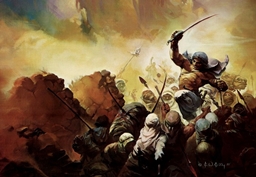
“Son of the White Wolf” is a grim and bloody tale, not too distant in tone from Red Nails the last Conan story. Osman is a long way from the villains of “Country of the Knife” or “The Lost Valley of Iskander” with their somewhat quaint schemes of conquest. Osman is a racialist totalitarian, of the type that created Auschwitz and the gulag. But for all the dark implications, El Borak wins, and Osman’s schemes are stopped in a classic Howardian bloodbath.
In a sense it is the final maturation for Gordon. The character that began in a ten year-old’s imagination of Cowboys and Indians, played by a script from the Arabian Nights, that passed through half-told tales of treasure hunts and power-seeking, became a hero that fights on behalf of those who need a defender.
Of course El Borak is fictional, one might speak of Robert E. Howard’s maturation as a writer. Equally, one may question the need for maturity in a writer. Readers want stories that keep their interest, that in itself is sufficient. Maturity, social themes, a correct attitude may or may not be what a reader desires, and no reader requires justification for reading what they desire.
Every critic speaks for himself. I’ll say that since the day I brought home the battered copy of “Lost Valley of Iskander” that sits by my computer, I’ve never had cause to find Robert E. Howard’s tales of Francis X. Gordon, El Borak, known from Stamboul to the China Sea, to be anything less than enthralling.
Prior Posts in A (Black) Gat in the Hand – 2023 Series (15)
Back Down those Mean Streets in 2023
Will Murray on Hammett Didn’t Write “The Diamond Wager”
Dashiell Hammett – ZigZags of Treachery
Ten Pulp Things I Think I Think
Evan Lewis on Cleve Adams
T,T, Flynn’s Mike & Trixie (The ‘Lost Intro’)
John Bullard on REH’s Rough and Ready Clowns of the West – Part I (Breckenridge Elkins)
John Bullard on REH’s Rough and Ready Clowns of the West – Part II
William Patrick Murray on Supernatural Westerns, and Crossing Genres
Erle Stanley Gardner’s ‘Getting Away With Murder (And ‘A Black (Gat)’ turns 100!)
James Reasoner on Robert E. Howard’s Trail Towns of the old West
Frank Schildiner on Solomon Kane
William Patrick Murray on the Title of Hammett’s The Glass Key
Paul Bishop on The Fists of Robert E. Howard
John Lawrence’s Cass Blue – Volume 2
Prior posts in A (Black) Gat in the Hand – 2022 Series (16)
Asimov – Sci Fi Meets the Police Procedural
The Adventures of Christopher London
Weird Menace from Robert E. Howard
Spicy Adventures from Robert E. Howard
Thrilling Adventures from Robert E. Howard
Norbert Davis’ “The Gin Monkey”
Tracer Bullet
Shovel’s Painful Predicament
Back Porch Pulp #1
Wally Conger on ‘The Hollywood Troubleshooter Saga’
Arsenic and Old Lace
David Dodge
Glen Cook’s Garrett, PI
John Leslie’s Key West Private Eye
Back Porch Pulp #2
Norbert Davis’ Max Latin
Prior posts in A (Black) Gat in the Hand – 2021 Series (7 )
The Forgotten Black Masker – Norbert Davis
Appaloosa
A (Black) Gat in the Hand is Back!
Black Mask – March, 1932
Three Gun Terry Mack & Carroll John Daly
Bounty Hunters & Bail Bondsmen
Norbert Davis in Black Mask – Volume 1
Prior posts in A (Black) Gat in the Hand – 2020 Series (21)
Hardboiled May on TCM
Some Hardboiled streaming options
Johnny O’Clock (Dick Powell)
Hardboiled June on TCM
Bullets or Ballots (Humphrey Bogart)
Phililp Marlowe – Private Eye (Powers Boothe)
Cool and Lam
All Through the Night (Bogart)
Dick Powell as Yours Truly, Johnny Dollar
Hardboiled July on TCM
YTJD – The Emily Braddock Matter (John Lund)
Richard Diamond – The Betty Moran Case (Dick Powell)
Bold Venture (Bogart & Bacall)
Hardboiled August on TCM
Norbert Davis – ‘Have one on the House’
with Steven H Silver: C.M. Kornbluth’s Pulp
Norbert Davis – ‘Don’t You Cry for Me’
Talking About Philip Marlowe
Steven H Silver Asks you to Name This Movie
Cajun Hardboiled – Dave Robicheaux
More Cool & Lam from Hard Case Crime
A (Black) Gat in the Hand – 2019 Series (15)
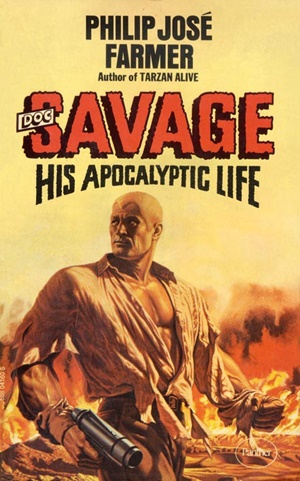 Back Deck Pulp Returns
Back Deck Pulp Returns
A (Black) Gat in the Hand Returns
Will Murray on Doc Savage
Hugh B. Cave’s Peter Kane
Paul Bishop on Lance Spearman
A Man Called Spade
Hard Boiled Holmes
Duane Spurlock on T.T. Flynn
Andrew Salmon on Montreal Noir
Frank Schildiner on The Bad Guys of Pulp
Steve Scott on John D. MacDonald’s ‘Park Falkner’
William Patrick Murray on The Spider
John D. MacDonald & Mickey Spillane
Norbert Davis goes West(ern)
Bill Crider on The Brass Cupcake
A (Black) Gat in the Hand – 2018 Series (33)
George Harmon Coxe
Raoul Whitfield
Some Hard Boiled Anthologies
Frederick Nebel’s Donahue
Thomas Walsh
Black Mask – January, 1935
Norbert Davis’ Ben Shaley
D.L. Champion’s Rex Sackler
Dime Detective – August, 1939
Back Deck Pulp #1
W.T. Ballard’s Bill Lennox
Erle Stanley Gardner’s The Phantom Crook (Ed Jenkins)
Day Keene
Black Mask – October, 1933
Back Deck Pulp #2
Black Mask – Spring, 2017
Erle Stanley Gardner’s ‘The Shrieking Skeleton’
Frank Schildiner’s ‘Max Allen Collins & The Hard Boiled Hero’
A (Black) Gat in the Hand: William Campbell Gault
A (Black) Gat in the Hand: More Cool & Lam From Hard Case Crime
MORE Cool & Lam!!!!
Thomas Parker’s ‘They Shoot Horses, Don’t They?’
Joe Bonadonna’s ‘Hardboiled Film Noir’ (Part One)
Joe Bonadonna’s ‘Hardboiled Film Noir’ (Part Two)
William Patrick Maynard’s ‘The Yellow Peril’
Andrew P Salmon’s ‘Frederick C. Davis’
Rory Gallagher’s ‘Continental Op’
Back Deck Pulp #3
Back Deck Pulp #4
Back Deck Pulp #5
Joe ‘Cap’ Shaw on Writing
Back Deck Pulp #6
The Black Mask Dinner
Dave Hardy is a former member of the Robert E. Howard Press Association and has written for REH: Two-gun Raconteur and The Cimmerian. His novels Crazy Greta and Palmetto Empire are available from Rough Edges Press. He lives in Austin with his wife and daughter.

Bob Byrne’s ‘A (Black) Gat in the Hand’ made its Black Gate debut in 2018 and has returned every summer since.
His ‘The Public Life of Sherlock Holmes’ column ran every Monday morning at Black Gate from March, 2014 through March, 2017. And he irregularly posts on Rex Stout’s gargantuan detective in ‘Nero Wolfe’s Brownstone.’ He is a member of the Praed Street Irregulars, founded www.SolarPons.com (the only website dedicated to the ‘Sherlock Holmes of Praed Street’) and blogs about Holmes and other mystery matters at Almost Holmes.
He organized Black Gate’s award-nominated ‘Discovering Robert E. Howard’ series, as well as the award-winning ‘Hither Came Conan’ series. Which is now part of THE DEFINITIVE guide to Conan. He also organized 2023’s ‘Talking Tolkien.’
He has contributed stories to The MX Book of New Sherlock Holmes Stories – Parts III, IV, V, VI, XXI, and XXXIII.
He has written introductions for Steeger Books, and appeared in several magazines, including Black Mask, Sherlock Holmes Mystery Magazine, The Strand Magazine, and Sherlock Magazine.
The El Borak stories were great.
When I was at my first (and only, so far) Howard Days last year, I bought an El Borak facsimile at the library. I didn’t need it, but that was too cool to pass up.
I’ve started an essay on The Fire of Ashurbanipal, after discovering a radio play of it this summer. Maybe for next year’s series.
I like just about every story in that Del Rey book – El Borak or other character.
Howard firing on all or at least most cylinders here. Can’t remember when or where I found it, but I have the original paperback edition of Lost Valley Of Iskander with the wraparound Jeff Jones cover and the interior illustrations by Michael Kaluta. Say what you will about Zebra books—they did have a low-rent air about them—their art department could sometimes produce a striking, or at least memorable-looking book on occasion.
This might be completely inaccurate, but the rumor is that Howard died before finishing The Three-Bladed Doom, and way back in the 30’s some unknown editor wrote the last few thousand words of the story.
Read this notion at some forgotten place online years ago, so take it with a grain of salt.
The rumor is wrong. Howard wrote several drafts of Three Bladed Doom, including two separate versions: a short version and a long version. He did complete the story in both versions in the existing drafts.
The rumor may have confused Almuric with Three Bladed Doom, as Howard didn’t finish writing that story, and there is an argument on who did finish it for its publication in Weird Tales.
Good to know.
Excellent post! Thank you Mr. Hardy, and you as well, Mr. Bullard.